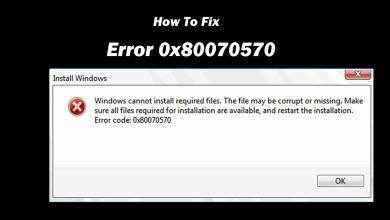When enacting a digital marketing strategy, your goal is to establish connections and build relationships between your brand and its target audience. In email marketing, this necessitates that you are able to reliably reach the inboxes of your subscribers. That means that email deliverability is paramount.
But what exactly does deliverability mean, and how can you improve it?
Contents
What is email deliverability?
Email deliverability refers to the ability to get email messages to their target destination.
Having high deliverability means that outbound emails will consistently arrive in the inboxes of their recipients as intended. Conversely, having low deliverability means that emails will not arrive where they are supposed to, instead being directed to recipients’ junk folders or being blocked entirely.
Having high deliverability is a major concern for email marketers because it is virtually impossible to gain any real traction through email marketing without it. Senders with low deliverability will typically see poor ROI on their email marketing campaigns.

There are a variety of different factors which can contribute to a sender having high or low deliverability. The following are some key examples:
- Sender reputation
ISPs monitor your sending behavior and assign a sender reputation score to your IP address. This score typically ranges between 0 and 100 and determines your trustworthiness as a sender. A high reputation score corresponds to good deliverability, while a low score will likely cause mailbox providers to send your emails to the junk folder.
- Subscriber engagement
When your subscribers actively engage with your marketing emails, this reflects well on you as a sender. That means performing key engagement metrics such as open rate and click-through rate will yield better deliverability.
- Email content
Mail providers have strict filters which help them to weed out spammers. These filters will analyze the content of your emails and look for specific characteristics typically associated with spam behavior, such as sensational vocabulary, incorrect syntax, and poor punctuation. Triggering these filters will reduce your chances of delivery.
- Your IP address
If you use a shared IP address, then you are essentially pooling your reputation with that of other senders. Depending on the behavior of those senders, your deliverability may fluctuate to some extent, and that could impact the success of your campaigns.
- Hard & soft bounces
A bounce occurs when an email cannot be sent. Soft bounces indicate temporary issues, such as a full inbox, while hard bounces indicate more serious permanent issues, such as an invalid recipient email address. Bounces can indicate poor sending practices and, as such, can impact your reputation and deliverability.
- Spam reports
If recipients repeatedly opt to use the spam report feature in response to your messages, ISPs and mailbox providers will view you as an untrustworthy sender. As a result, your deliverability will suffer.
What are the ways to ensure excellent email deliverability?
Broadly speaking, the best way to maintain high deliverability is to follow email marketing best practices. The following can help you to do this:
- Use a double opt-in
A double opt-in subscription method requires users to give unequivocal consent to being placed on your mailing list. This achieves two things. Firstly, it helps to prevent bounces due to typos. Secondly, it ensures that your mailing lists are populated with highly interested users, meaning you will perform better on key engagement metrics.
- Segment and clean your mailing lists
Despite using an opt-in system, you may still experience deliverability issues due to your lists degrading over time. By segmenting your lists according to engagement, you can see which subscribers are least active and remove them at regular intervals. Cleaning lists in this way will prevent inactive or invalid addresses from harming your deliverability.
- Refine your content
To cleanly pass spam filters, you should refine the content of your emails as much as possible. This means fine-tuning the subject lines, preheaders, and body content to ensure there are no linguistic or grammatical errors. Spam filters will recognize that your emails bring legitimate value to users, which will be reflected in your deliverability.
- Use a dedicated IP address
If you are concerned that sharing an IP with other senders might affect your ability to reach your subscribers, then it may be a good idea to opt for a dedicated IP address. This is an IP created and assigned to you alone, allowing you to have full control over your own reputation and deliverability.
Conclusion
In email marketing, deliverability is everything, as it allows you to reach your target audience and increase the revenue potential of your brand. Many factors can potentially be detrimental to your deliverability; however, by engaging in permission-based email marketing and adhering to best practices, you can ensure that your deliverability stays high, giving you the best possible chance of success.



